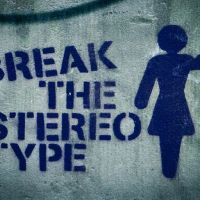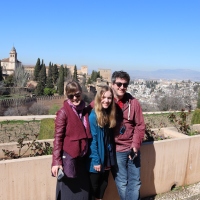Thanksgiving is coming soon. For many of us, it’s usually about turkey and pie. Of course,  this year, it’s also about super awkward conversations and silences as we all try avoid talking about the giant orange elephant in the room. (No insult meant to real elephants. You’re adorable).
this year, it’s also about super awkward conversations and silences as we all try avoid talking about the giant orange elephant in the room. (No insult meant to real elephants. You’re adorable).
We all know what we learned about Thanksgiving in school. The Pilgrims and the Native Americans came together, two very opposite cultures, and broke bread peacefully. It’s a nice sentiment that feels like something we should try to emulate in these tumultuous times.
But, being me, I can’t just accept everything I hear as truth. I wondered – what is the real story of Thanksgiving? Not the one given to me in line drawings I colored in when my teacher needed a break in 4th grade. I’m pretty sure it wasn’t all turkeys, buckles, smiles and happiness. I already knew turkey wasn’t the main food event at the first Thanksgiving! They also didn’t have corn on the cob, apples, pears, potatoes or likely even cranberries. What else have our history teachers been lying about? So, of course, I went searching.
Here are common misconceptions about Thanksgiving I found.
Misconception #1: Native Americans and Pilgrims were super best friends at the first Thanksgiving
Eh, not so much. Native Americans are called that for a reason. They were in American first (aka, native to the land). The pilgrims (aka, immigrants) came in and pretty much ruined the lives of the Native Americans from the start and stole from them with little regard. Soon after arriving in Plymouth, Massachusetts, Pilgrims went into Native American homes and took whatever they wanted.
“The next morning we found a place like a grave. We decided to dig it up. We found first a mat, and under that a fine bow… We also found bowls, trays, dishes, and things like that. We took several of the prettiest things to carry away with us, and covered the body up again.” – Lies My Teacher Told Me: Everything Your American History Textbook Got Wrong by James Loewen
Misconception #2: The first Thanksgiving took place in 1621 in the Plymouth Colony
It is generally confirmed, it seems, that a feast did take place in Plymouth, MA and both the colonists and Wampanoag Indians were present. That seems to be about all that can be confirmed for sure. There are other accounts of first Thanksgivings taking place before this time in other locations.
 Misconception #3: The Pilgrims invited the Native Americans to the first Thanksgiving to give thanks and celebrate their new peaceful friendship
Misconception #3: The Pilgrims invited the Native Americans to the first Thanksgiving to give thanks and celebrate their new peaceful friendship
The Native Americans were more likely “party crashers.” The Pilgrims apparently celebrated a successful harvest by shooting guns and cannons into the air. (I’ll refrain from making a snarky modern-day comment here. But it’s hard!) It’s believed the Wampanoag chief and 90 warriors marched to the settlement in response. There are many claims about this, but it seems historians generally believe that shooting at least brought the Native Americans to the settlement out of interest or fear and the Pilgrims allowed them to stay, out of interest or fear. (Nope, that doesn’t sound tense at all.)
Misconception #4: The Pilgrims provided the feast for the Native Americans
Again, this seems not likely. If we’re sticking with 1621 Plymouth as the first official Thanksgiving, accounts indicate that during the 3-day festival (another myth, it wasn’t just one day), the Native Americans came and went and brought with them large amounts of food, including venison, which served as the main protein (not turkey).
Misconception #5: The first Thanksgiving was the FIRST one and a THANKSGIVING
So, not only was the first Thanksgiving not actually the first Thanksgiving, it also wasn’t actually a Thanksgiving. For the Pilgrims, Thanksgiving was a common practice meant to give Thanks to God. It’s pretty much assured they would not let Native Americans partake in such an event. The first Thanksgiving, therefore, would more accurately be called the First Harvest Festival. Except it still wouldn’t be the first one either because a harvest festival or giving thanks for a harvest was already common practice for both groups.
According to Loewen, “Thanksgiving is full of embarrassing facts. The Pilgrims did not introduce the Native Americans to the tradition; Eastern Indians had observed autumnal harvest celebrations for centuries.”
“No one knows when the ‘first’ thanksgiving occurred. People have been giving thanks for as long as people have existed. Indigenous nations all over the world have celebrations of the harvest that come from very old traditions.. To refer to the harvest feast of 1621 as ‘The First Thanksgiving’ disappears Indian peoples in the eyes of non-Native children.”
-https://www.manataka.org/page1390.html
Misconception #6: Thanksgiving ushered in an era of peace between Native Americans and Pilgrims
U h, yeah, no. In 1637, English soldiers massacred 700 Pequot men, women and children at Mystic Fort, which was actually commemorated at a future Pilgrim Thanksgiving. After King Philip’s War, most Native Americans in the Northeast region had been wiped out, sold to slavery or fled to Canada.
h, yeah, no. In 1637, English soldiers massacred 700 Pequot men, women and children at Mystic Fort, which was actually commemorated at a future Pilgrim Thanksgiving. After King Philip’s War, most Native Americans in the Northeast region had been wiped out, sold to slavery or fled to Canada.
Also, its important to remember that Thanksgiving isn’t necessarily a time of celebration for everyone. The Manataka website explains it well, “For many Indian people, ‘Thanksgiving’ is a time of mourning, of remembering how a gift of generosity was rewarded by theft of land and seed corn, extermination of many from disease and gun, and near total destruction of many more from forced assimilation. As currently celebrated in this country, ‘Thanksgiving’ is a bitter reminder of 500 years of betrayal returned for friendship.”
Misconception #7: The first Thanksgiving immediately established a yearly tradition.
Nope. Sorry. Wrong again. According to Mashpee Wampanoag Tribal Historic Preservation Officer Ramona Peters, “It was Abraham Lincoln who used the theme of Pilgrims and Indians eating happily together. He was trying to calm things down during the Civil War when people were divided. It was like a nice unity story.”
Here are some other common misconceptions
- Pilgrims wore buckled hats (they didn’t)
- Native Americans wore only loin cloths (Uh, have you been to Massachusetts in the fall? I don’t think so.)
- Pilgrims weren’t actually called pilgrims, they were colonists. Pilgrims is a misnomer.
 What is to be learned from this exercise?
What is to be learned from this exercise?
Now I’m no historian and I’m sure some of the above could be debated. But it seems pretty clear that the idea of Thanksgiving we’ve been fed (ha – like the pun?) our whole lives is at minimum incomplete and over romanticized. Does this mean that we should not still try to emulate the modern concept of Thanksgiving – coming together and being thankful for what we have? Of course not! It’s a wonderful idea, even if it it’s based on some warped history. But, like many things, perhaps we should also not just ignore the truth and bury our heads in the sand (or in a turkey) because its inconvenient and difficult to face. Even with a story as old and established as Thanksgiving, it’s good to question, wonder, research and challenge assumed truths. It makes us human. It makes us smarter and we definitely need to be smarter.
See below for sources for this information in case you’d like to read more or confirm they are legitimate in case you don’t believe this information:
- http://indiancountrytodaymedianetwork.com/2013/11/28/6-thanksgiving-myths-share-them-someone-you-know-152475
- http://historynewsnetwork.org/article/406#sthash.J91i87C1.dpuf
- http://www.todayifoundout.com/index.php/2010/11/10-thanksgiving-myths-dispelled/
- https://www.washingtonpost.com/blogs/answer-sheet/post/5-myths-about-thanksgiving/2011/11/22/gIQA3UffmN_blog.html
- https://www.manataka.org/page1390.html
- http://www.rd.com/culture/thanksgiving-myths/
- http://news.nationalgeographic.com/news/2012/11/121120-thanksgiving-2012-dinner-recipes-pilgrims-day-parade-history-facts/
And, just because it’s fun and cute, here is a picture of thanksgiving with just dogs.











November 27, 2016 at 12:48 pm
Wow! Interesting stuff to learn!
LikeLike